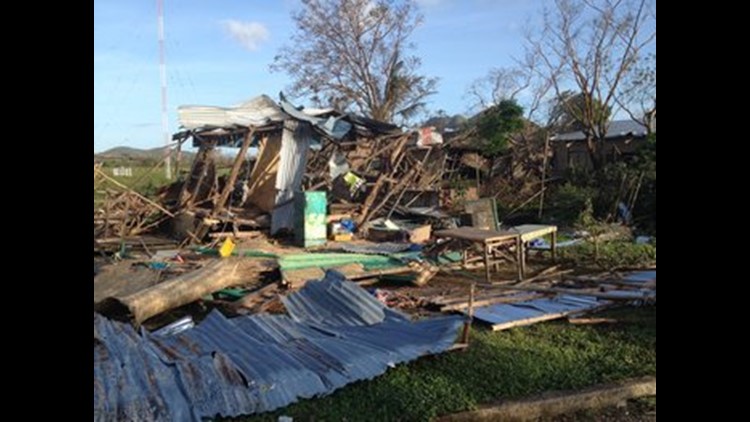TACLOBAN, Philippines (CNN) — Desperation grew among Filipinos who’ve been without electricity or shelter for more than a week since Super Typhoon Haiyan reduced homes to splinters, prompting the military to alter rescue manuevers, an official said Saturday.
“People swarm the helicopters, so we land the helicopters a little bit farther from the population areas,” said Maj. Gen. Romer Poquiz of the Philippine Air Force. “So before the people come in, we would take off, go and drop in other places, drop and then go, drop, go, drop, go, at various places.”
Several countries, including the U.S. military, continued to assist Philippine authorities in a massive relief effort of delivering food and water to the devastated swaths of the archipelago. The central government is being criticized for a slow and disorganized response to what all agree is a catastrophic disaster.
The U.S. military may rotate out the aircraft carrier group with the USS George Washington once amphibious ships arrive, a senior U.S. military official told CNN. Relief efforts were also showing a lot of field hospital capability, the official said.
Meanwhile, military planes and helicopters delivered foodstuffs, and some people carried all that remained of their possessions and were lucky enough to be ferried to refuge in Cebu.
U.K. Foreign Secretary William Hague said the Royal Navy’s HMS Daring was scheduled to arrive Sunday morning and assist the relief efforts. An disclosed number of British nationals remain unaccounted for, Hague said.
The toll remains overwhelming with thousands dead, about 3 million people displaced, vast communities flattened and looting and violence erupting in Tacloban, a major city that’s the ground zero in the super typhoon strike.
Crews continued Saturday to collect bodies from streets, with the death toll increased to 3,637, according to the official death count.
The number of injured stood at 12,487, the National Disaster Risk Reduction and Management Council reported. At least 1,179 were missing.
The death toll could still climb higher, with an additional 1,000 cadaver bags sent to provinces, the disaster council announced as search-and-rescue operations continued in Tacloban City.
The national disaster council’s executive director, Eduardo Del Rosario, said the bags would be placed on standby, given that most of the bodies had already been buried in mass graves or claimed by relatives.
Cadaver bags are cleaned before being reused, he said.
The Philippines News Association reported Friday that five-person teams that include a forensic expert and photographer would begin using a “quick system” for the bodies on Saturday.
“Under the system, the public will not be allowed to view the identification process, but relatives will be asked to participate in the final identification of corpses at an appointed time,” it reported, citing the Department of Health.
Each team will be required to handle 40 corpses per day, it said.
Health Secretary Enrique Ona said that photos will be taken, identifying marks will be documented and belongings and tissue samples for possible use in DNA testing will be collected, when practical.
The arrival in recent days of hundreds of aid workers and military troops has seen a floodgate of humanitarian aid — food, water and medical supplies — open, albeit sporadically, in the hard hit provinces.
A senior U.S. military official said approximately 9,000 U.S. troops are supporting the operation in the Philippines. U.S. military assets have delivered approximately 623,000 pounds of relief supplies.
Under a hot sun, refugees held umbrellas as they waited in line for provisions. Some wore masks apparently as protection from the rot and decay of their obliterated communities.
The nation’s disaster agency said between 9 million and 13 million people were affected in 44 provinces, 536 municipalities and 55 cities.



